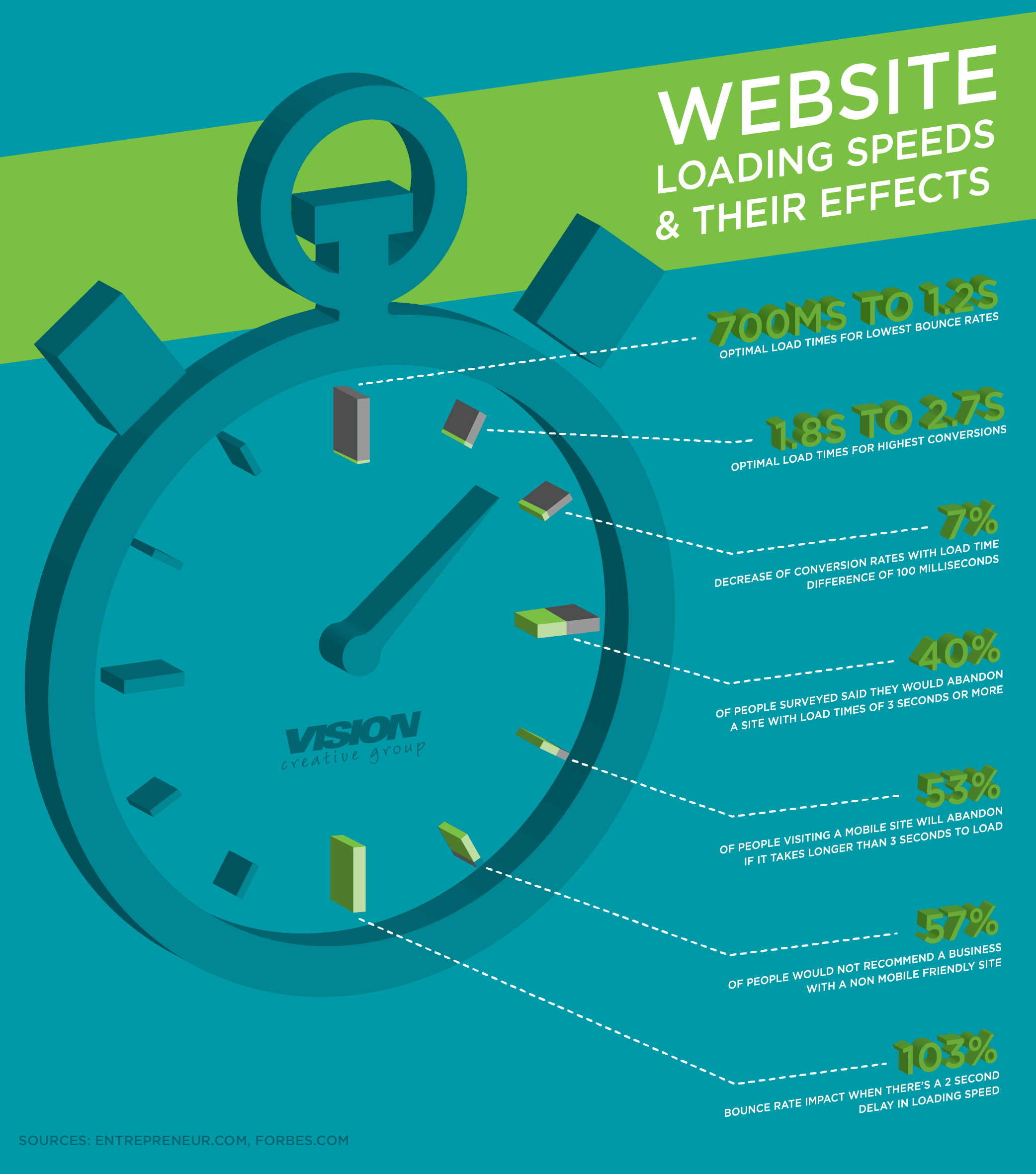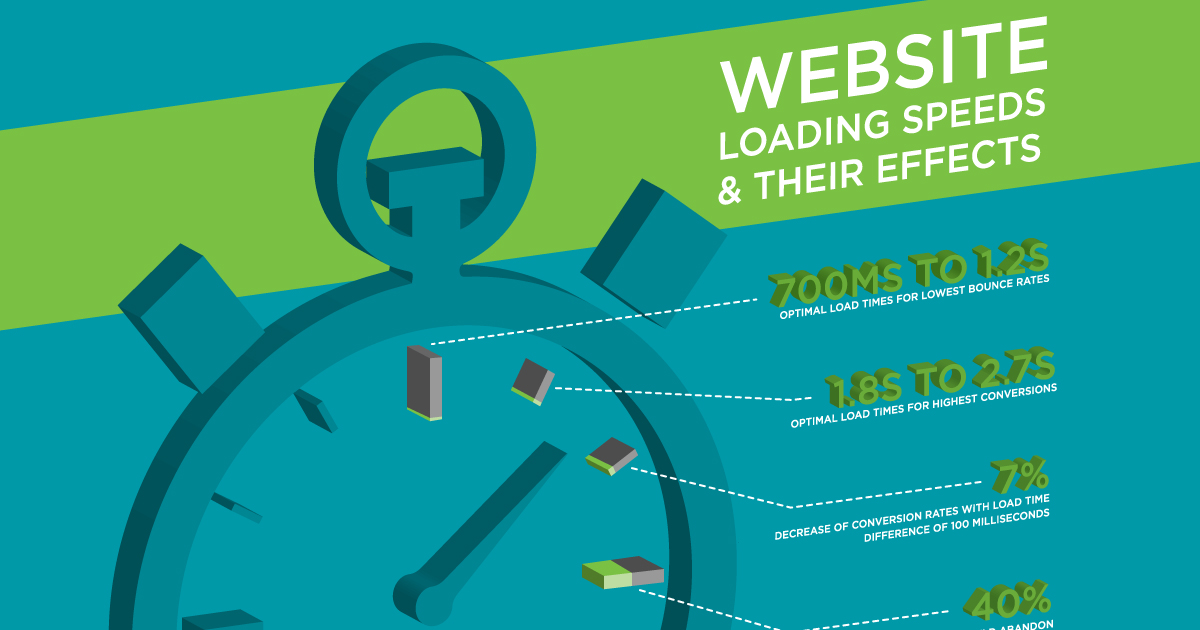Have you ever visited a website and it didn’t load instantly? Do you ever stop to notice how quickly you may get frustrated while impatiently waiting for everything to appear? We’ve all been there. In a time in which everything we access digitally is instantaneous, the cases when things aren’t delivered to us promptly can become an annoyance. We all know the saying, “First impressions are everything.” This doesn’t just apply to your first day on the job, the first day of school or your first time meeting people it applies to your company’s website loading speeds too.
In studies performed by Gomez.com and Akamai.com, almost half of people expect a website to load in two seconds, while 40 percent of them would choose to exit the site if it takes longer than three seconds to load. To make matters worse, 79 percent of those who left the site due to slow loading speed would be less likely to come back.
It’s time to speed things up. Here are a few easy tips to help determine if your website is loading quickly and what to do for why it’s not.
1. Check your website speed
Google has this handy tool called PageSpeed Insights that allows you to input your URL and it will generate your website’s stats and suggestions for improvement. It will even separate the stats by desktop vs. mobile to give you the most accurate and detailed information for each. This tool will identify all of the components that are causing things to slow down, but not only that, Google provides you the solutions for them too!
2. Optimize your images for web
Large images are one of the main culprits for slow loading speeds, taking up more than half of a website’s memory load on average. All images incorporated for your website should be saved down for web functionality. Stick to using PNG, JPEG and GIF file formats that are saved at 72 dpi (dots per inch) while keeping the file size as small as you can make it without losing quality. You can use programs such as Adobe Photoshop and Illustrator to optimize your images for the web; however, there are also numerous free online tools that will effectively do the same.
Check out Google’s Web Fundamentals for Image Optimization
3. Keep your website mobile friendly
Cell phones have quickly evolved into being tiny computers (well not so tiny these days) in our pockets. With every bit of information you can think of available to you right at your fingertips wherever you are, it is vital that your company’s website is optimized for mobile devices. Websites that are not mobile friendly tend to have tiny navigation, tiny images, tiny content, tiny everything. When your new or existing customers have to work to find the information they need on your website, that is a problem. A website that is responsive does exactly what the name says; it responds to each device it is being used on and formats accordingly. This means, large and easy to read navigation buttons and stacking your content for easy browsing. There are responsive templates that are easy to use on different platforms such as WordPress and Shopify.
In conclusion, a fast loading website can only benefit your business. So, what are you waiting for? 1…2…3…go!

